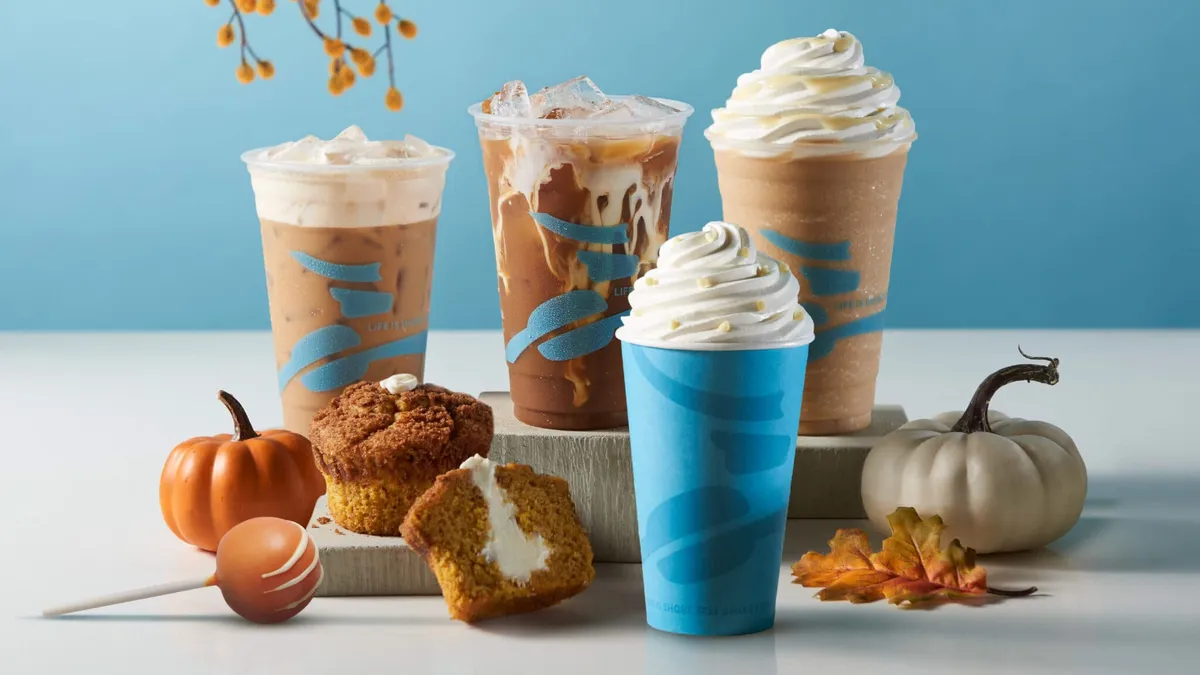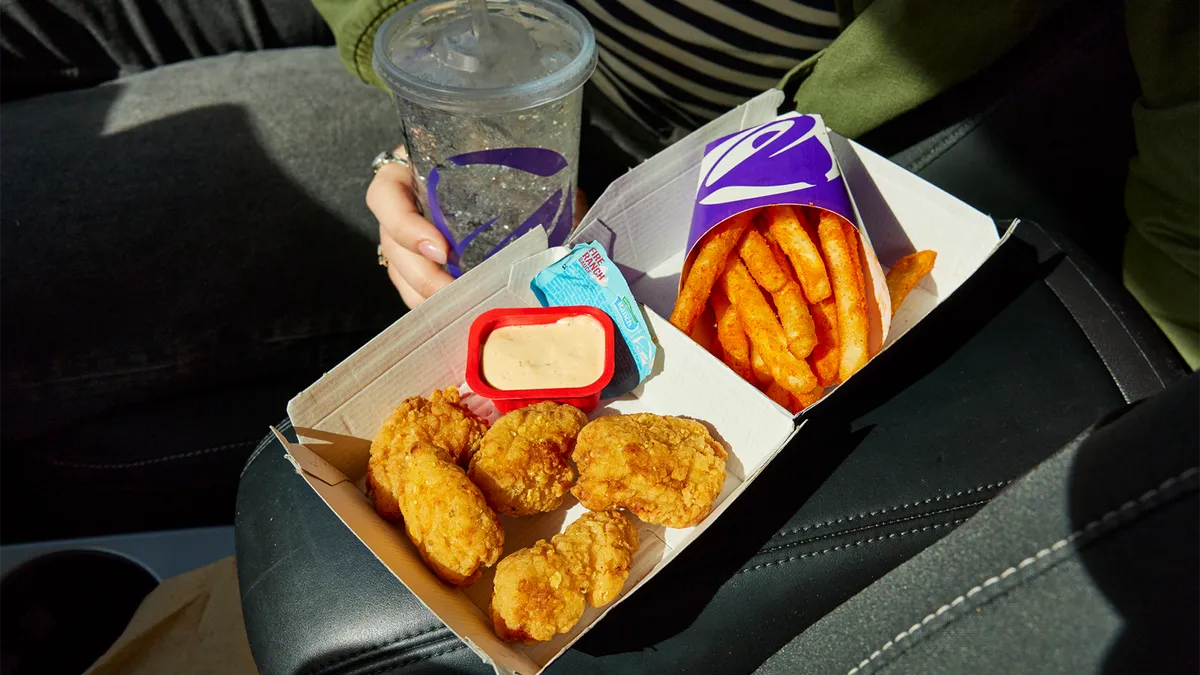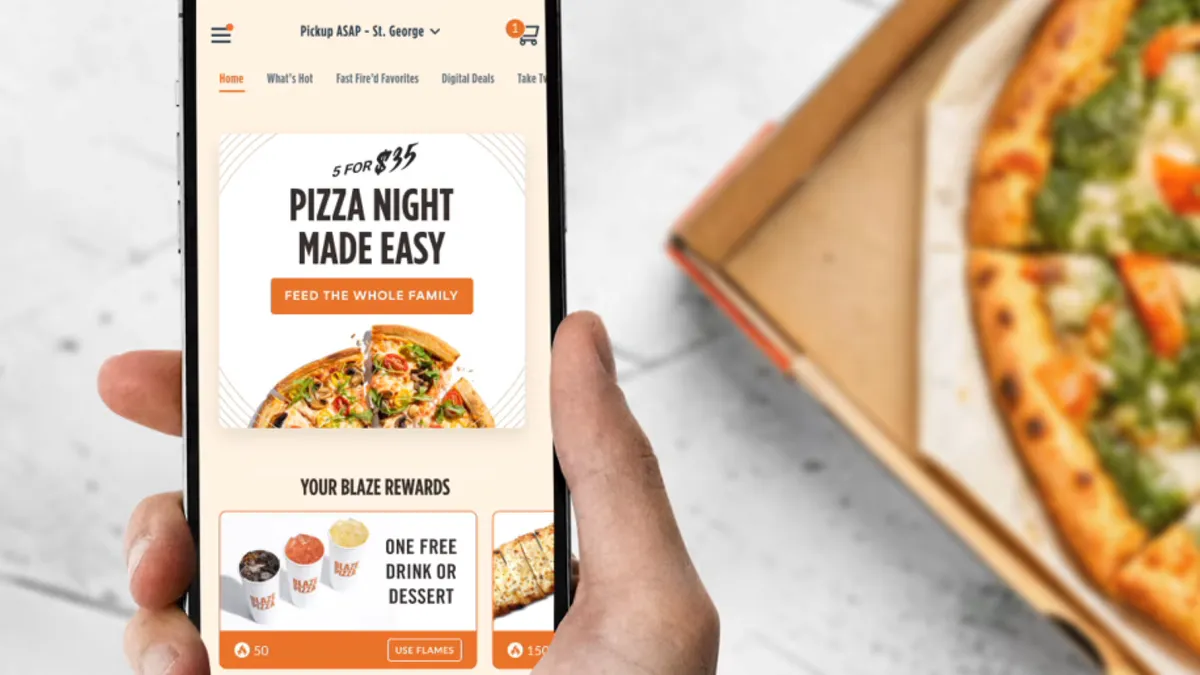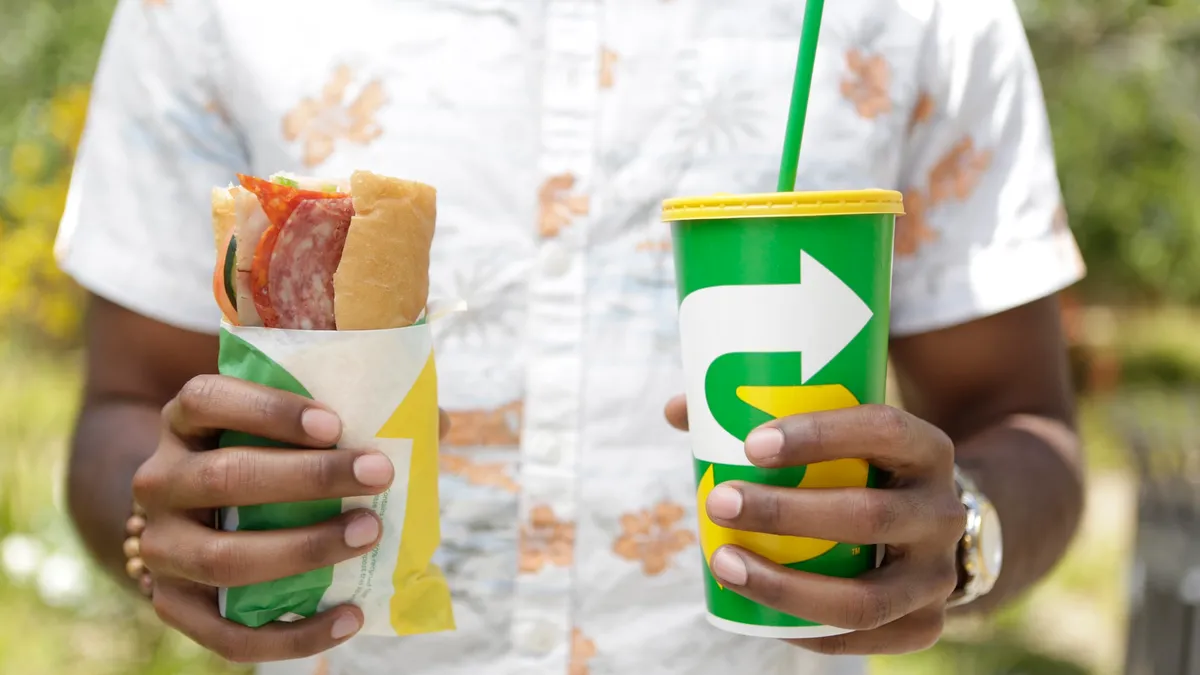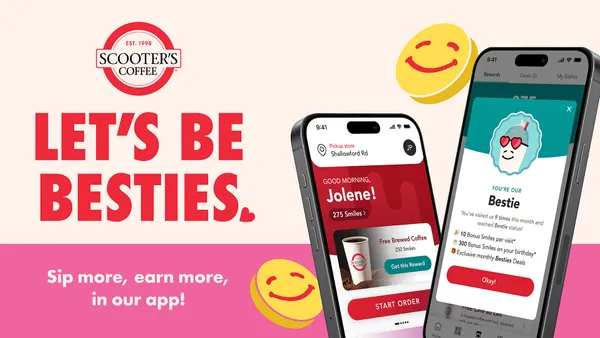Pumpkin’s popularity in coffee stems from association of the flavor with the emotional tone of autumn.
“Fall is a really heavy sensory season,” said Gretchen Hashemi-Rad, Caribou Coffee’s beverage category manager. “[Fall has] a lot of warm, cozy flavors that just marry really well with the coffee experience and why so many of us drink coffee. We need it for caffeine, but it's also nostalgic and warm and cozy.”
Pumpkin is Caribou’s best-performing LTO, Hashemi-Rad said. This year, the company is extending the menu item’s run into November, a time when the flavor remains relevant, she said, even as Caribou and competitors alike roll out winter holiday drinks.
Cold pumpkin beverages allow brands to begin building anticipation of fall weather earlier in the year, extending the length of time that the flavor feels relevant and connects emotionally with customers, said Kyle Newkirk, EVP for global sales and innovation for coffee supplier Westrock Coffee.
While nostalgia and autumnal vibes might drive consumer preference for pumpkin, building the drinks themselves is a difficult technical challenge, with the design and procurement of pumpkin flavor taking companies most of the year to complete.
Caribou starts planning its pumpkin lineup in February to stay ahead of the lead times on pumpkin supplies, Hashemi-Rad said. In contrast to some competitors, Caribou uses a sauce made from actual pumpkin puree, rather than a spiced syrup.
“It really is very early in the spring when you’re placing actual purchase orders for product later in the year,” Hashemi-Rad said.
Growing demand for cold coffee requires chains to design flavors that are stable, soluble and tasty across an incredible range of temperatures. Hot liquids have a higher solubility, making it easier to dissolve flavor additives and keep them stable — a more challenging undertaking for cold drinks.
“When you have a hot coffee product,” Newkirk said. “Much of the impact is when you breathe it in, and you experience the vapor and the steam coming off the coffee.”
That aromatic experience is limited in cold products, as cold liquids have a lower volatility than hot.
“[You have] to up the pumpkin spice impact to make sure that those flavors are coming through,” Newkirk said. That requires a flavor that is bold and distinct, and retains its flavor in contact with milk, milk substitutes, sweeteners and different coffee roasts. Solubility challenges can become operational challenges when workers need to stir or shake beverages excessively to ensure an even distribution of flavor.
“We need the sauce to be able to melt and incorporate into hot and cold liquids in a way that doesn’t require the team member to take so much time,” Hashemi-Rad said. “Speed of service is a huge factor in coffee shops; we need to be quick but consistent.”
Consumers are fueling cold pumpkin innovation
One key element pushing pumpkin spice season deeper into summer is a growing consumer preference for cold beverages, Newkirk said. That shift is inflected by, and reinforces, demographic changes in coffee consumers.
Newkirk said that prior to the last 10 years, most consumers self-reported that they began drinking coffee in their late teens or early twenties, often saying that decision was motivated by a need for energy, especially in college.
Now, Newkirk said, consumers are trying a wider variety of coffee drinks at a younger age.
“Coffee as a flavor, rather than coffee as the beverage, has been a bit of a change and allows more entry points for younger consumers to shift out of carbonated soft drinks or other products and into coffee as an accessible entry point.”
Customers eventually try a wide variety of coffee drinks after those first coffee-as-a-flavor treats, including hot, black coffee, Newkirk said. Younger consumers are driving a long-term trend, however, where nearly 60% to 70% of the coffee consumed away from home is cold.
It’s possible that seasonal flavor LTOs play a role in that shift, especially as pumpkin spice becomes a late summer flavor.
“That younger age group is buying cold [coffee] year round,” Hashemi-Rad said. “Because we have so many cold pumpkin drinks, you can still enjoy your fall flavor while it’s 85 degrees outside.”
Interest in cold pumpkin-flavored coffee has intensified very recently, Newkirk said.
“We did not see a tremendous amount of cold pumpkin spice product offerings across our channels three or four years ago,” Newkirk said. “Now almost everybody that we work with, particularly in the QSR and c-store space, has some type of cold pumpkin spice offering.”
The summer push of pumpkin drinks, so oft-lamented in pop culture, is a response to consumer demand.
“I understand the sentiment ‘but it’s still summer, why are we talking pumpkin?’” Hashemi-Rad said. “But it sells so well that some creep into August is happening, because people are excited.”
Pumpkin still drives traffic
While more stores are experimenting with apple and other autumnal flavors, these products are being developed as an addition to pumpkin flavor, rather than a replacement for it, Newkirk said. This is for a very simple reason: pumpkin is still driving traffic.
“Pumpkin is clearly the king every year,” Hashemi-Rad said. “At Caribou, we have launched other flavors during the pumpkin season. And we still see the same thing: The other flavor will do okay, and pumpkin just wins all.”
According to Placer.ai data, Starbucks traffic this year surged on the first day of Pumpkin Spice Latte season to a degree unseen in years past, up 25% above its 2017 PSL launch, higher than the pre-pandemic years and far higher than 2020, 2021 or 2022.
Starbucks kept its PSL release in late August, per its tradition of the last few years. But it shifted the rollout from Tuesday to Thursday, giving the brand momentum into the weekend. As Placer.ai noted, “Daily visits to Starbucks tend to peak on Saturdays, and on Saturday August 26th — two days after this year’s PSL launch — visits skyrocketed by 41.1% compared to the previous ten Saturdays’ already high daily average.”
On the supply side of things, at Westrock, pumpkin is still selling very well.
“On a seasonal basis, we’re up about, say 30% in volume over the last two years, per year,” Newkirk said.
Pumpkin, Hashemi-Rad said, keeps getting bigger, year after year.
“The most common misconception is that pumpkin is overdone. Or people are tired of pumpkin,” Hashemi-Rad said. “If you work in the coffee shop space, you're selling pumpkin the minute you put it on the menu.”



